Idea by
Amadeusz Krych
Call for ideas 2018
Spiral City
Spiral City
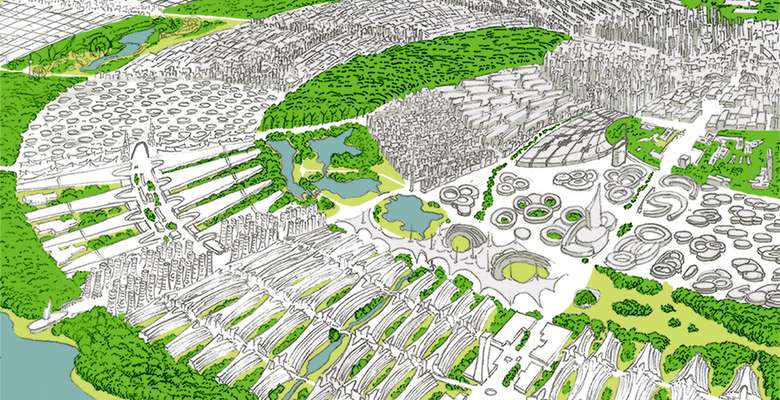
While the urban concepts of the 20th century have become outdated, few new alternatives to amorphism of the centric city have been proposed. The spiral model provides promising opportunities for better confrontation with the arising challenges of modernity: the overgrowth of suburbs and the expansion of non-places, imbalance in transportation, the growing inequality between world and regional centres, to name only a few. The settlement structure provided by the spiral model is based on the coexistence of nature with dense development, setting high and exceptionally egalitarian standards of living, constant closeness to the centre of the city. Its abstract composition is creating prospects for more lateral human activity within the city, as well as multiple applications in scientific works. The idea of abstractness and openness facilitates the processes of evolution and allows constant adaptation in the ever-changing world.
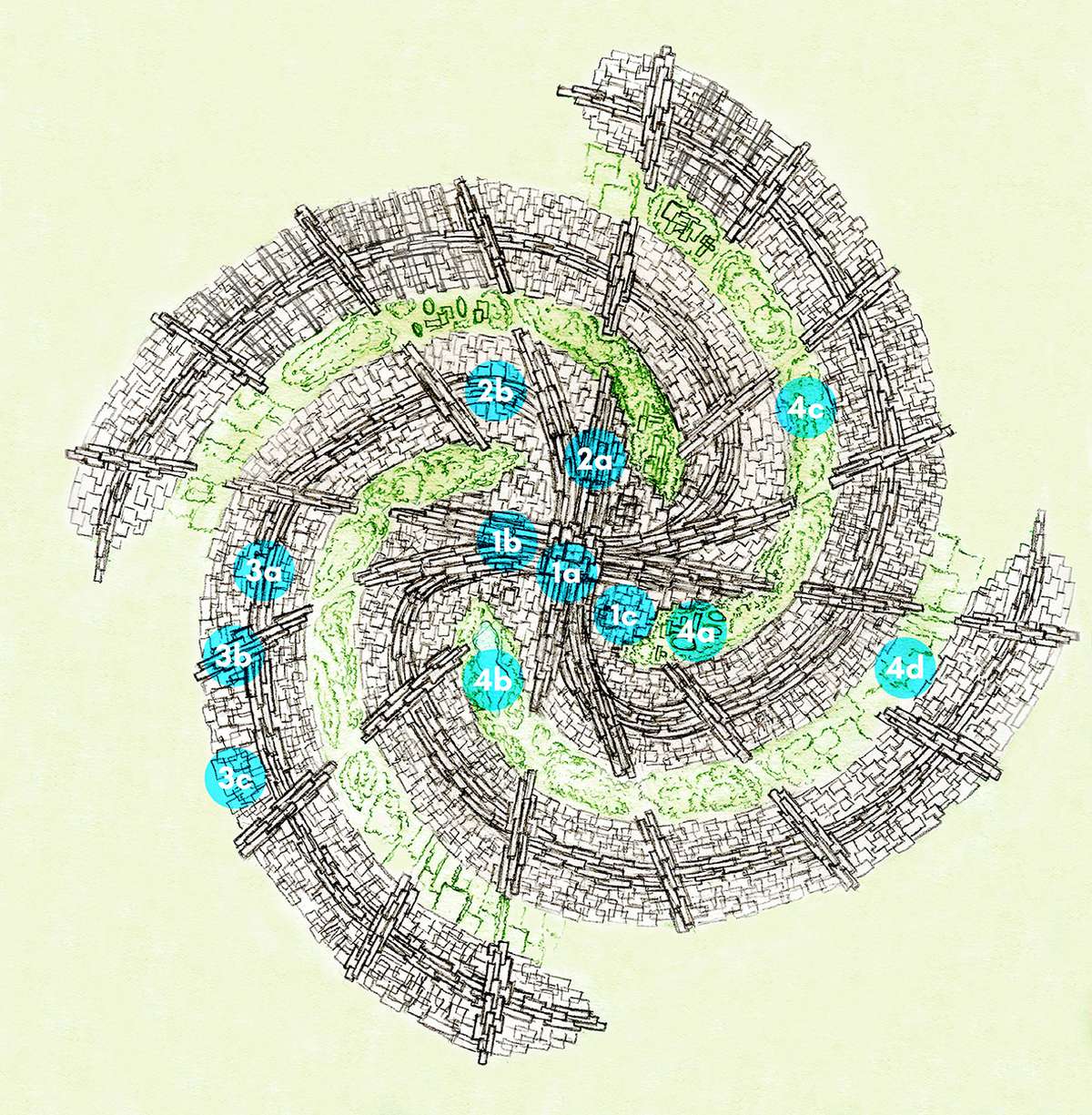
The plan of the model.
The drawing does not reflect the real pattern of streets and shapes of structures
1 Core:
1a Civic centre
1b Proto-band (high development)
1c Core neighbourhood (substance)
2 Emergence zone:
2a Branching zone
2b Centric/linear transition
3 Band:
3a Local nodes
3b High street
3c Housing substance
4 Open spaces:
4a Recreation
4b Park
4c Forest
4d Agriculture
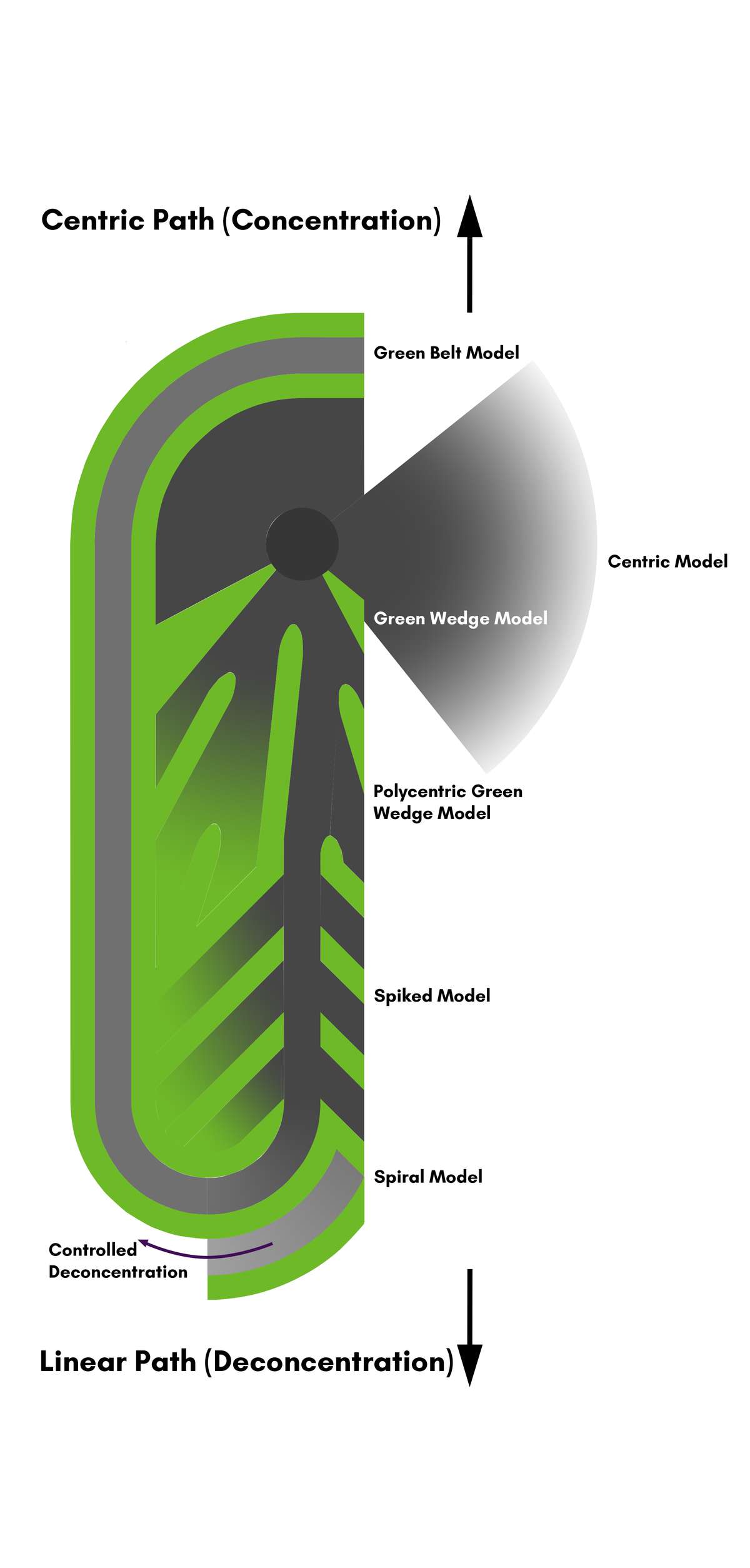
The scheme visualises the evolution from a conventional centric model, through two separate paths, into the spiral model. The deconcentric path was organised towards linear settlement, while the concentric path was given an opportunity to break the green belt. Upon merging of the two paths the concentric path exerts influence over the deconcentric development, naturally limiting and shaping their combined forms, thus creating a gradually growing spiral.

This image presents the difference in scale between concentric and spiral cities. Using the example of four major European cities, the straight-line distances from their historic centres to significant outer focal points were measured and embedded into the curvature of the spiral band. Following that the straight-line distances were measured again with an application of the spiral model.

The area-time plot (XYt) is a 3D projection of the amount of time it takes to commute from the centre point of the spiral to other locations in the city. The time is calculated for the public transportation network as well as pedestrian movement.
Spiral City
Spiral City

While the urban concepts of the 20th century have become outdated, few new alternatives to amorphism of the centric city have been proposed. The spiral model provides promising opportunities for better confrontation with the arising challenges of modernity: the overgrowth of suburbs and the expansion of non-places, imbalance in transportation, the growing inequality between world and regional centres, to name only a few. The settlement structure provided by the spiral model is based on the coexistence of nature with dense development, setting high and exceptionally egalitarian standards of living, constant closeness to the centre of the city. Its abstract composition is creating prospects for more lateral human activity within the city, as well as multiple applications in scientific works. The idea of abstractness and openness facilitates the processes of evolution and allows constant adaptation in the ever-changing world.
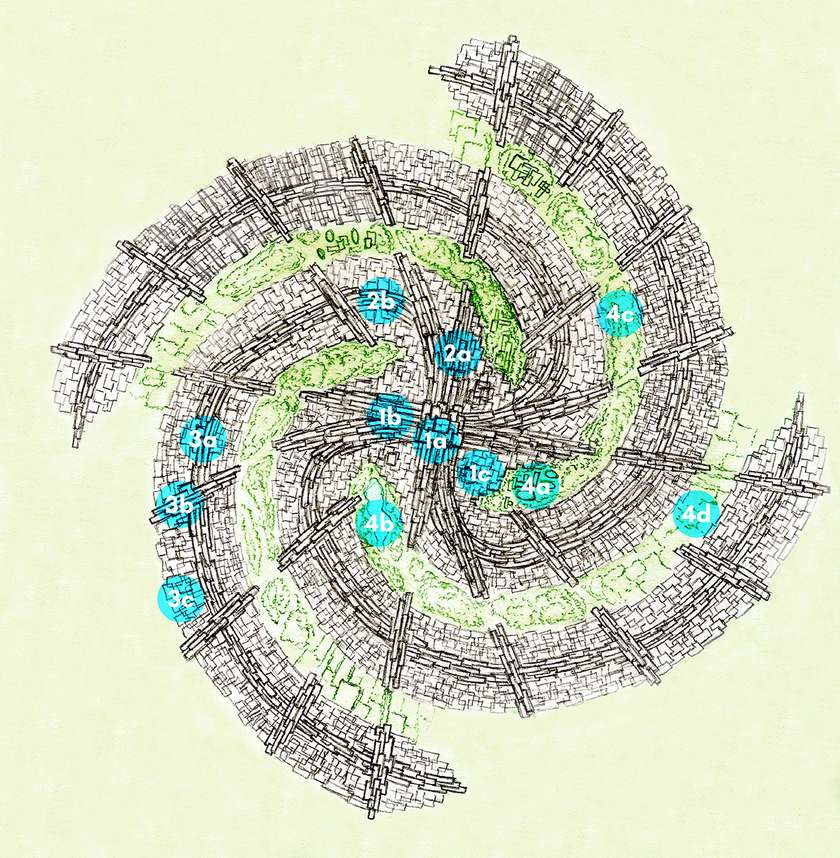
The plan of the model.
The drawing does not reflect the real pattern of streets and shapes of structures
1 Core:
1a Civic centre
1b Proto-band (high development)
1c Core neighbourhood (substance)
2 Emergence zone:
2a Branching zone
2b Centric/linear transition
3 Band:
3a Local nodes
3b High street
3c Housing substance
4 Open spaces:
4a Recreation
4b Park
4c Forest
4d Agriculture

The scheme visualises the evolution from a conventional centric model, through two separate paths, into the spiral model. The deconcentric path was organised towards linear settlement, while the concentric path was given an opportunity to break the green belt. Upon merging of the two paths the concentric path exerts influence over the deconcentric development, naturally limiting and shaping their combined forms, thus creating a gradually growing spiral.
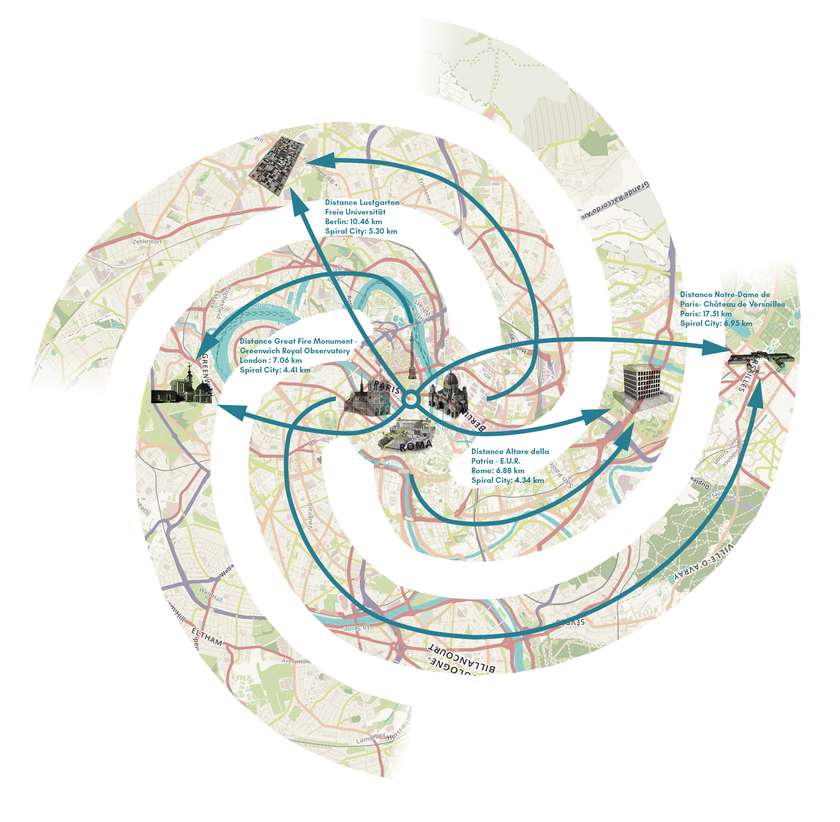
This image presents the difference in scale between concentric and spiral cities. Using the example of four major European cities, the straight-line distances from their historic centres to significant outer focal points were measured and embedded into the curvature of the spiral band. Following that the straight-line distances were measured again with an application of the spiral model.

The area-time plot (XYt) is a 3D projection of the amount of time it takes to commute from the centre point of the spiral to other locations in the city. The time is calculated for the public transportation network as well as pedestrian movement.